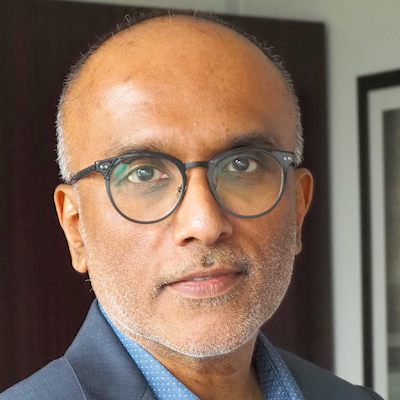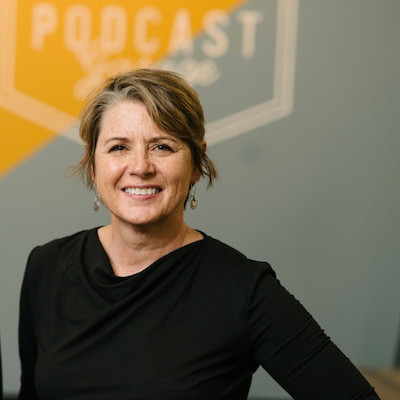You’ll be able to buy a newspaper day pass
Let’s see if this sounds familiar.
You’re scrolling Twitter and you see a link to a story that sounds interesting. You click it, head to the newspaper’s website, and are greeted with an interstitial ad.
“This story is for subscribers only!” Or the dreaded “You’ve reached your limit of free articles” — even though this is the first time you’ve come to this site in months. The ad gives you the chance to subscribe for $10 a month to support local journalism, but that’s an investment in a paper you read irregularly at best.
You think to yourself: “Self — why is it subscribe or nothing? I’m happy to support good journalism, but how is it nearly 2022 and I still can’t pay to read a single online news article?”
This is the year that starts to change. 2022 is the year that more publishers can, will, and should start offering day passes to read articles.
In the past, ideas like this have been broadly referred to as “micropayments.” But that sounds vaguely associated with crypto, and who wants that?
So just think of them as day passes. It’s the digital equivalent of buying the paper. It doesn’t seem like a viable option to make people pay $1 to read a single news article. (That’s a lot of dough for a 600-word column on why the Bills can’t score in the red zone.) And charging people a few pennies per article feels too complicated and unsustainable.
Instead, news organizations can give readers the option for a day pass. $1 gets you 24-hour access to all stories on a site. Most news organizations are already tracking IP addresses for traditional paywall purposes, so the technology exists at a wide scale, and a number of publishers have given it a try. But few outlets have the time or resources to manage every pay-to-read purchase, the same way they weren’t responsible for every single-issue sale. Axate, a U.K.-based company, is doing some interesting things in this space, allowing publishers to set up day passes, subscriptions, donations, or newsletter packages.
To be clear, this isn’t an idea to save daily journalism, because it won’t. Much of the research into this area, from the early to mid-2000s, examined this idea on a macro level, as a business model to support daily journalism. And the results of those studies were mixed. But as a complementary business model, it’s a way to serve readers while providing news organizations with another revenue stream.
Let’s clear one thing up, though: This is not about correcting the “original sin” of newspapers being blindsided by the internet and not charging for news online — for getting people used to free news by giving it away.
For one thing, as Pablo Boczkowski wrote, newspapers did try to adapt to digital technologies as early as the 1980s — but they did so by adopting reactive, defensive, and pragmatic strategies. Newspapers tried to adapt to the internet, but it was always done in a way that first and foremost protected the print product. The internet was always seen as this extra, bonus thing that complemented the print edition instead of making it the focal point. This wasn’t something that happened to newspapers; it was something that happened because of how newspapers acted.
It’s also worth remembering that back in those early days of the web (the mid-to-late 1990s), there was a real hesitation to pay for content online. “Information yearns to be free” was the defining sociology of the early internet. Also, regular people were hesitant to pay for things online, which was seen as not secure, weird, and a little pathetic. (There’s a scene in “The Net” where Sandra Bullock’s character orders a pizza online and it’s presented as evidence of a sad, lonely life.) It wasn’t until 2004, with the launch of the iTunes Store, that it became more mainstream to pay for content online.
But the bigger issue is that the digital age yielded the most significant change to media in our lifetime — possibly the most significant change since the advent of broadcasting. As Vin Crosbie wrote, our media options have moved from scarcity to abundance. The business model that supported newspapers and daily journalism throughout the mass media age is fundamentally incompatible with the realities of the digital age.
Which means that for daily journalism to survive, any new business model needs to be centered on that reality.
Subscriptions are and will remain the gold standard for digital media companies. They’re a regular source of steady income from your most engaged readers. They’re the people who care most, who are buying in. And yes, it makes more economic sense for them to spend, say, $5 a month on a subscription rather than buying a $1 daily pass every day.
But that was also true in the print era: It was always cheaper to have the paper delivered than to buy it on the newsstand. And relying only on subscriptions isn’t the be-all and end-all — The Athletic, which for years was one of digital media’s success stories, is struggling to match the growth demands of its investors through just subscriptions. It’s both looking for a potential buyer and possibly accepting ads.
Also, we’re in the middle of the Subscription-Pocalypse, so we can’t rely on people having the time, money, or attention to add another subscription to their inboxes.
Day passes won’t save local news or daily journalism. There’s no magic bullet, and after 20-plus years, it’s time for us in and around the industry to stop looking for that one perfect business model that will save everything.
But there are people in the audience who click on your links, who want to read your work and who want to financially support local journalism. In 2022, it’s time to give them a better way to do that.
Brian Moritz is director of online journalism master’s programs at St. Bonaventure University.

Let’s see if this sounds familiar.
You’re scrolling Twitter and you see a link to a story that sounds interesting. You click it, head to the newspaper’s website, and are greeted with an interstitial ad.
“This story is for subscribers only!” Or the dreaded “You’ve reached your limit of free articles” — even though this is the first time you’ve come to this site in months. The ad gives you the chance to subscribe for $10 a month to support local journalism, but that’s an investment in a paper you read irregularly at best.
You think to yourself: “Self — why is it subscribe or nothing? I’m happy to support good journalism, but how is it nearly 2022 and I still can’t pay to read a single online news article?”
This is the year that starts to change. 2022 is the year that more publishers can, will, and should start offering day passes to read articles.
In the past, ideas like this have been broadly referred to as “micropayments.” But that sounds vaguely associated with crypto, and who wants that?
So just think of them as day passes. It’s the digital equivalent of buying the paper. It doesn’t seem like a viable option to make people pay $1 to read a single news article. (That’s a lot of dough for a 600-word column on why the Bills can’t score in the red zone.) And charging people a few pennies per article feels too complicated and unsustainable.
Instead, news organizations can give readers the option for a day pass. $1 gets you 24-hour access to all stories on a site. Most news organizations are already tracking IP addresses for traditional paywall purposes, so the technology exists at a wide scale, and a number of publishers have given it a try. But few outlets have the time or resources to manage every pay-to-read purchase, the same way they weren’t responsible for every single-issue sale. Axate, a U.K.-based company, is doing some interesting things in this space, allowing publishers to set up day passes, subscriptions, donations, or newsletter packages.
To be clear, this isn’t an idea to save daily journalism, because it won’t. Much of the research into this area, from the early to mid-2000s, examined this idea on a macro level, as a business model to support daily journalism. And the results of those studies were mixed. But as a complementary business model, it’s a way to serve readers while providing news organizations with another revenue stream.
Let’s clear one thing up, though: This is not about correcting the “original sin” of newspapers being blindsided by the internet and not charging for news online — for getting people used to free news by giving it away.
For one thing, as Pablo Boczkowski wrote, newspapers did try to adapt to digital technologies as early as the 1980s — but they did so by adopting reactive, defensive, and pragmatic strategies. Newspapers tried to adapt to the internet, but it was always done in a way that first and foremost protected the print product. The internet was always seen as this extra, bonus thing that complemented the print edition instead of making it the focal point. This wasn’t something that happened to newspapers; it was something that happened because of how newspapers acted.
It’s also worth remembering that back in those early days of the web (the mid-to-late 1990s), there was a real hesitation to pay for content online. “Information yearns to be free” was the defining sociology of the early internet. Also, regular people were hesitant to pay for things online, which was seen as not secure, weird, and a little pathetic. (There’s a scene in “The Net” where Sandra Bullock’s character orders a pizza online and it’s presented as evidence of a sad, lonely life.) It wasn’t until 2004, with the launch of the iTunes Store, that it became more mainstream to pay for content online.
But the bigger issue is that the digital age yielded the most significant change to media in our lifetime — possibly the most significant change since the advent of broadcasting. As Vin Crosbie wrote, our media options have moved from scarcity to abundance. The business model that supported newspapers and daily journalism throughout the mass media age is fundamentally incompatible with the realities of the digital age.
Which means that for daily journalism to survive, any new business model needs to be centered on that reality.
Subscriptions are and will remain the gold standard for digital media companies. They’re a regular source of steady income from your most engaged readers. They’re the people who care most, who are buying in. And yes, it makes more economic sense for them to spend, say, $5 a month on a subscription rather than buying a $1 daily pass every day.
But that was also true in the print era: It was always cheaper to have the paper delivered than to buy it on the newsstand. And relying only on subscriptions isn’t the be-all and end-all — The Athletic, which for years was one of digital media’s success stories, is struggling to match the growth demands of its investors through just subscriptions. It’s both looking for a potential buyer and possibly accepting ads.
Also, we’re in the middle of the Subscription-Pocalypse, so we can’t rely on people having the time, money, or attention to add another subscription to their inboxes.
Day passes won’t save local news or daily journalism. There’s no magic bullet, and after 20-plus years, it’s time for us in and around the industry to stop looking for that one perfect business model that will save everything.
But there are people in the audience who click on your links, who want to read your work and who want to financially support local journalism. In 2022, it’s time to give them a better way to do that.
Brian Moritz is director of online journalism master’s programs at St. Bonaventure University.
Mike Rispoli

Chicas Poderosas

Joshua P. Darr

Burt Herman

Shannon McGregor Carolyn Schmitt

Sarah Marshall

Raney Aronson-Rath

Matt DeRienzo

Tony Baranowski

Millie Tran

Juleyka Lantigua

Andrew Freedman

Gabe Schneider

Moreno Cruz Osório

Natalia Viana

Melody Kramer

Joanne McNeil

Catalina Albeanu

Cristina Tardáguila

Izabella Kaminska

Chase Davis

Christoph Mergerson

Julia Munslow

Matthew Pressman

Rasmus Kleis Nielsen

Anthony Nadler

Zizi Papacharissi

Don Day

Doris Truong

Sam Guzik

Cindy Royal

Gordon Crovitz

Stefanie Murray

Jesse Holcomb

A.J. Bauer

Jessica Clark

Kendra Pierre-Louis

Brian Moritz

Simon Galperin

Simon Allison

Stephen Fowler

Kristen Muller

Jesenia De Moya Correa

Janelle Salanga

John Davidow

Mary Walter-Brown

Parker Molloy

Richard Tofel

James Green

Christina Shih

Anika Anand

Sarah Stonbely

Whitney Phillips

Anita Varma

Jody Brannon

Megan McCarthy

Alice Antheaume

Mario García

Amy Schmitz Weiss

Joy Mayer

j. Siguru Wahutu

Candace Amos

Kathleen Searles Rebekah Trumble

Amara Aguilar

Victor Pickard

Julia Angwin

Eric Nuzum

David Cohn

Mandy Jenkins

Daniel Eilemberg

Kristen Jeffers

Wilson Liévano

Matt Karolian

S. Mitra Kalita

Tom Trewinnard

Cherian George

Errin Haines

Joni Deutsch

Meena Thiruvengadam

David Skok

Paul Cheung

Ståle Grut

Nikki Usher

Gonzalo del Peon

Robert Hernandez

Tamar Charney

Kerri Hoffman

Larry Ryckman

Jennifer Coogan

Joe Amditis

Shalabh Upadhyay

Ariel Zirulnick

Jonas Kaiser

Francesco Zaffarano

Rachel Glickhouse

Michael W. Wagner

AX Mina

Laxmi Parthasarathy

Jim Friedlich

Jennifer Brandel
